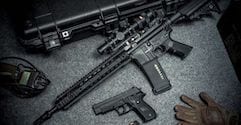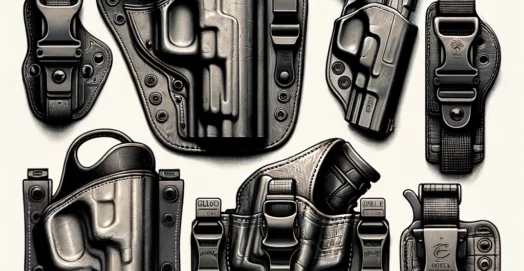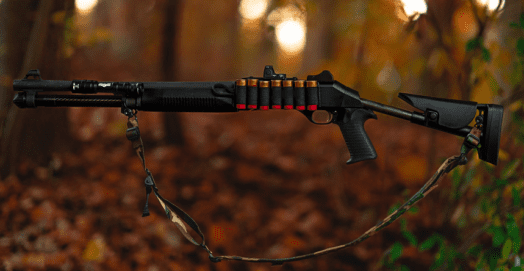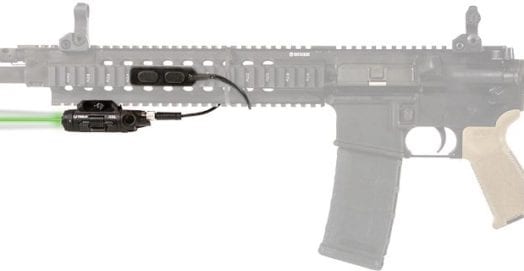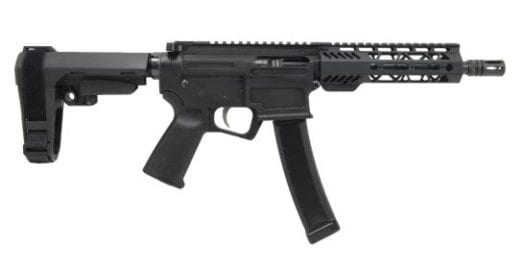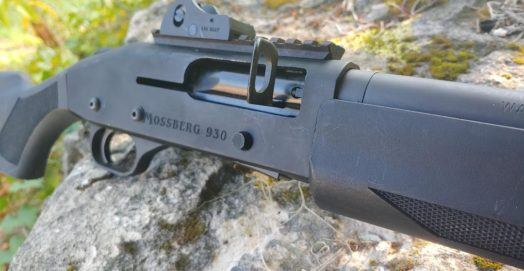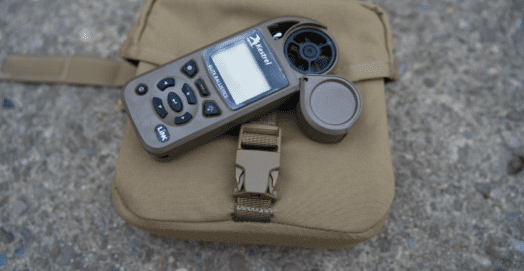Best Glock Mags on the Market Today

You can never have too many Glock magazines.
Well, I guess if you don’t have a gun that takes one you can, but I’m assuming that if you’re reading this, you probably have at least one firearm, whether an actual Glock or a pistol caliber carbine, that accepts Glock magazines. In that case, more is definitely better for a few different reasons.
For one, having a spare mag is great when you encounter malfunctions. Just pop the malfunctioning magazine out and slide a fresh one in, rather than having to eject, clear, and reload your magazine like you would if you only had one magazine. If you’re shooting at the range, this is just a matter of convenience, but in a defensive situation, it can make all the difference.
Speaking of defensive situations, even if your first mag works like a charm, having a spare or two gives you more rounds to work with. You may not need them, but it’s certainly better to have them if you do.
Having magazines of different capacities helps your gun be more effective for a variety of situations. For example, high capacity magazines are great for shooting for fun at the range, home defense, and loading into your pistol caliber carbine, but you probably don’t want to use one with your EDC weapon.
And if you have both a Glock and a pistol caliber carbine that use the same magazine, having enough for each gun to have it’s own set is highly convenient, even though you can switch between them.
But it’s hard to tell what’s a good magazine and what’s not while just browsing. Fortunately, you have me. I’ve gotten the opportunity to use a bunch of different Glock mags over time and I’m passing the knowledge that I’ve gained from that experience to you with some recommendations for the best Glock mags.
Let’s get started by talking about Glock factory magazines.
Contents
Aftermarket Mags vs. Factory Mags
Glock factory mags are actually excellent magazines, so if you have a bunch sitting around already, I wouldn’t worry about replacing them.
However, if you’re looking to add to your magazine count and especially if you’re on a budget, there are some aftermarket magazines are worth a look.
Aftermarket magazines used to be stereotyped as garbage. To be fair, a lot of aftermarket Glock mags are still just junk, but you do have a couple of good options.
The main advantage of aftermarket Glock magazines as a whole is that they’re generally significantly cheaper than OEM ones. Aside from that, advantages differ from magazine to magazine.
On the other hand, OEM Glock magazines have the benefits of familiarity and proven quality. In addition, if you’re planning on using your mag with a pistol caliber carbine, you know it will work with a factory Glock mag since that’s the standard to which they were designed.
Aftermarket magazines are usually interchangeable with factory mags, but not always, due to minor differences in their design. You may need to do a bit of research to make sure that a particular aftermarket Glock mag is compatible with your particular pistol caliber carbine.
Let’s talk a bit more about the advantages that Glock factory mags have going for them before we move on to aftermarket options, since they’re the baseline for comparison.
Glock Factory Magazines
Glock factory mags really are great, high-quality magazines.
Their rugged, black polymer construction makes them durable, lightweight, and easy to clean and maintain. They’re highly reliable, like you’d expect from anything made by Glock. Sure, jams happen, just like with any magazine, but they’re few and far between.
Magazines slide into the magwell smoothly and comfortably, then drop free easily when you hit the mag release, whether full or empty.
They have witness holes with round counts along the rear of the magazine, but other than that they’re pretty basic. They won’t improve on what comes with you’re gun since, well, they are what comes with your gun.
The exception to this is improving capacity by buying a higher capacity magazine. Subcompact Glocks can use the same magazines as their compact counterparts and both subcompact and compact Glocks can use the standard magazine for their full-size counterpart.
All three sizes can use the high capacity magazines (used here to mean magazines with capacities well above that of the standard magazines that come with Glock pistols) that Glock makes in their caliber, but Glock only makes high capacity magazines for 9mm (24 rounds and 33 rounds) and .40 S&W (22 rounds).
As I already said, OEM mags can be pretty pricey, but if you want to stick with them, you can buy a three pack or, even better, a ten pack to save a bit on each magazine.
Now let’s move on to the aftermarket options.
Magpul PMAGs
Magpul has made quite a name for themselves in the world of firearm accessories, especially for the AR-15. Many of us have a few of their AR PMAG magazines sitting around already. I certainly do.
Unfortunately, Magpul didn’t get off to a great start with their Glock mags, but the good news is that they made improvements to fix the issues and haven’t had a major problem since.
Magpul’s proprietary stiff, heavy-duty polymer makes these magazines lightweight, durable, and easy to care for. The stainless steel spring is corrosion resistant and has excellent longevity, even if you store the magazines loaded.
The controlled-tilt follower and reinforced feed lips help the magazine feed smoothly and reliably. It also drops free easily for quick mag switches.
The floor plate is flared for easy loading and unloading, and has a dot matrix panel that you can mark with a paint pen to make it easier to identify your magazines. If you prefer to use a different floor plate, Magpul’s is easy to remove thanks to its push-button disassembly, so you can switch it out for competitions or just for a different floor plate that you prefer.
All of these advantages have lead Magpul PMAGs to become increasingly popular among competition shooters and law enforcement over the past few years.
The big disadvantage is that they’re only available in 9mm right now, but Magpul has already expanded their 9mm selection by a great deal since they first released their Glock mags, so I’m suspicious that it’s only a matter of time before they expand to include other calibers as well. There are also rumors that Magpul has plans to introduce additional high capacity magazines to the line-up, though I can’t say how founded those rumors are.
Currently, the selection includes two high-capacity magazines, standard magazines for each size of 9mm Glock, and 10 round magazines for each full-size and compact Glocks.
The 27 round PMAG is the newest addition to the lineup and is IPSC competition legal. It features indicator windows on each side of the magazine body at 10, 15, 21, and 27 rounds.
The other high capacity PMAG holds 21 rounds and is USPSA limited class legal. It has indicator windows on each side of the magazine body at 10, 15, and 21 rounds.
Like their factory counterparts, the full-sized PMAG holds 17 rounds, while the compact PMAG holds 15. Each has a full magazine indicator window, but no other witness holes.
The subcompact version has the same indicator window setup, but rather than 10 rounds, like the factory version, the subcompact PMAG holds 12 rounds with only minimal additional length making it an excellent choice if you carry a G43 as your CCW.
Not having more witness holes is a disadvantage for these magazines, especially for the ones that only have full mag indicators, but it only really makes a difference when the magazine isn’t loaded into the gun. While it would be nice to have witness holes for each round, the extended mags do at least have them at intervals past the point where they would stick out of the Glock 17 to help you keep track during use.
On the other hand, these magazines have a lot going for them and they’re crazy affordable. The high capacity iterations are less than $20 a pop, while the others are closer to about $12. You can also buy them in three packs and select sizes in ten packs for extra savings, and they can frequently be found on sale for a few more bucks off on each.
Elite Tactical Systems Best Glock Mags
Another good source for aftermarket Glock magazines is Elite Tactical Systems, or ETS.
ETS mags are highly recognizable due to the translucent polymer that forms the body of the magazine.
In addition to looking dope, being able to see the entire inside of the mag makes it easy to keep track of how full the magazine is, allows you to spot problems in the magazine ahead of time, and helps you identify the caliber of a loaded magazine if you happen to have multiple firearms that accept Glock mags of different calibers.
That polymer has advantages outside of being translucent too, though. It allows these to be some of the most durable and impact resistant magazines on the market, not to mention resistant to scratching, UV rays, chemicals, extreme temperatures, and feed lip creep.
In short, you can throw a lot of abuse at these guys and they’ll still be crack, abrasion, and warp free.
The baseplate is ergonomic to make it easier to grab from mag pouches and holsters, but it’s also easy to disassemble and replace and the magazine itself is compatible with most floor plates designed for Glock magazines.
ETS offers more options than Magpul and, though they are a bit more expensive than Magpul, they’re still far cheaper than Glock’s factory mags. ETS is also expanding their already pretty large selection in the near future.
Currently, ETS offers magazines for 9mm, .40 S&W, and .380 Auto, but they’ll begin offering magazines for .45 Auto and 10mm, as well as additional mags for the calibers they already have, starting October 7, 2019.
The 9mm lineup offers the most variety and includes 31, 27, 22, and 17 round capacity options, which are all compatible with the Glock 17, 18, 19, 19x, 26, 34, and 45. The 27 rounder is IPSC competition legal while the 22 rounder is SPSA competition legal. The 9mm line also includes a 15 round mag for the Glock 19 and 26, a 12 round mag for the Glock 43, and several 10 rounders for various Glocks for those of you living in places with magazine capacity restrictions.
When ETS expands the line in October, they’ll be adding a 40 round mag (compatible with the Glock 17, 18, 19, 26, 34, and 45), as well as a 19 round mag and an additional 10 round mag for the Glock 43X and 48.
The .40 S&W lineup currently includes 30, 24, 19, and 16 round magazines for use with the Glock 22, 23, 24, 27, and 35. The 24 round mag is IPSC legal and the 19 round mag is USPSA legal. It also includes a 13 round mag for the Glock 23 and 27 and a 9 round mag for the Glock 27.
The 9mm and .40 S&W magazines also have compatible Rapid Recognition Systems (RRS) for color coding your mags for even easier sight identification.
.380 Auto magazines come in 12, 9, and 7 round capacities.
The new .45 Auto lineup will include 30, 18, and 13 round capacity magazines (compatible with the Glock 21, 30, and 41) and a 9 round for the Glock 30.
The new 10mm lineup will include 30, 20, and 15 round capacity magazines (compatible with the Glock 20, 29, and 40) and a 10 round for the Glock 29.
Extended mags are usually found for right under $20, while standard mags are a few bucks cheaper. They can often be found on sale.
Parting Shots
With the quality of aftermarket Glock magazines tending to run towards the extremes, it can be tough to know what’s good and what’s glorified garbage. Hopefully this guide has made that easier for you.
These magazines are some solid options, but if you know of others, let me know. And if you know of magazines that should be absolutely avoided at all cost, share that info too.








